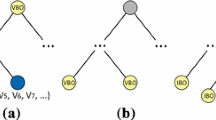Abstract
Visibility culling of a scene is a crucial stage for interactive graphics applications, particularly for scenes with thousands of objects. The culling time must be small for it to be effective. A hierarchical representation of the scene is used for efficient culling tests. However, when there are multiple view frustums (as in a tiled display wall), visibility culling time becomes substantial and cannot be hidden by pipelining it with other stages of rendering. In this paper, we address the problem of culling an object to a hierarchically organized set of frustums, such as those found in tiled displays and shadow volume computation. We present an adaptive algorithm to unfold the twin hierarchies at every stage in the culling procedure. Our algorithm computes from-point visibility and is conservative. The precomputation required is minimal, allowing our approach to be applied for dynamic scenes as well. We show performance of our technique over different variants of culling a scene to multiple frustums. We also show results for dynamic scenes.
Preview
Unable to display preview. Download preview PDF.
Similar content being viewed by others
References
Assarsson, U., Möller, T.: Optimized View Frustum Culling Algorithms for Bounding Boxes. Journal of Graphics Tools: JGT 5, 9–22 (2000)
Bittner, J., Wimmer, M., Piringer, H., Purgathofer, W.: Coherent Hierarchical Culling: Hardware Occlusion Queries Made Useful. Comput. Graph. Forum 23, 615–624 (2004)
Cruz-Neira, C., Sandin, D.J., DeFanti, T.A.: Surround-screen projection-based virtual reality: the design and implementation of the CAVE. In: SIGGRAPH (1993)
Hudson, T., Manocha, D., Cohen, J., Lin, M., Hoff, K., Zhang, H.: Accelerated occlusion culling using shadow frusta. In: Symposium on Computational geometry (1997)
Raskar, R., Brown, M.S., Yang, R., Chen, W.C., Welch, G., Towles, H., Seales, W.B., Fuchs, H.: Multi-projector displays using camera-based registration. In: IEEE Visualization, pp. 161–168 (1999)
Teller, S.J., Sequin, C.H.: Visibility preprocessing for interactive walkthroughs. In: SIGGRAPH (1991)
Airey, J.M.: Increasing update rates in the building walkthrough system with automatic model-space subdivision and potentially visible set calculations. PhD thesis, Director-Frederick P. Brooks, Jr. (1990)
Airey, J.M., Rohlf, J.H., Frederick, P., Brooks, J.: Towards image realism with interactive update rates in complex virtual building environments. In: Symposium on Interactive 3D graphics (1990)
Nirnimesh, N.P.J.: Scalable, Tiled Display Wall for Graphics using a Coordinated Cluster of PCs. In: 14th Pacific Conference on Computer Graphics and Applications (Pacific Graphics) (2006)
Burns, D., Osfield, R.: OpenSceneGraph A: Introduction, B: Examples and Applications. In: IEEE Virtual Reality Conference (2004)
Funkhouser, T.A.: Database Management for Interactive Display of Large Architectural Models. In: Graphics Interface (1996)
Aliaga, D.G., Cohen, J., Wilson, A., Baker, E., Zhang, H., Erikson, C., III, K.E.H., Hudson, T., Stürzlinger, W., Bastos, R., Whitton, M.C., Jr., F.P.B., Manocha, D.: MMR: an interactive massive model rendering system using geometric and image-based acceleration. In: Symposium on Interactive 3D Graphics. (1999)
Corrêa, W.T., Klosowski, J.T., Silva, C.T.: Visibility-Based Prefetching for Interactive Out-Of-Core Rendering. In: IEEE Symposium on Parallel and Large-Data Visualization and Graphics (2003)
Klosowski, J.T., Silva, C.T.: The Prioritized-Layered Projection Algorithm for Visible Set Estimation. IEEE Trans. Vis. Comput. Graph. 6, 108–123 (2000)
Slater, M., Chrysanthou, Y.: View volume culling using a probabilistic caching scheme. In: Virtual Reality Software and Technology (1997)
Sutherland, I.E., Sproull, R.F., Schumacker, R.A.: A characterization of ten hidden-surface algorithms. ACM Comput. Surv. 6, 1–55 (1974)
Cohen-Or, D., Chrysanthou, Y., Silva, C.T., Durand, F.: A survey of visibility for walkthrough applications. IEEE Trans. Vis. Comput. Graph. 9, 412–431 (2003)
Durand, F.: 3D Visibility: analytical study and applications. PhD thesis, Université Joseph Fourier, Grenoble I (1999)
Clark, J.H.: Hierarchical Geometric Models for Visible Surface Algorithms. Commun. ACM 19, 547–554 (1976)
Funkhouser, T.A., Séquin, C.H., Teller, S.J.: Management of large amounts of data in interactive building walkthroughs. In: Symposium on Interactive 3D Graphics (1992)
Assarsson, U., Möller, T.: Optimized View Frustum Culling Algorithms. Technical Report 99–3, Department of Computer Engineering, Chalmers University of Technology (1999)
Zhang, H., Manocha, D., Hudson, T., Kenneth, E., Hoff, I.: Visibility culling using hierarchical occlusion maps. In: SIGGRAPH (1997)
Rohlf, J., Helman, J.: IRIS Performer: a high performance multiprocessing toolkit for real-time 3D graphics. In: SIGGRAPH (1994)
Author information
Authors and Affiliations
Editor information
Editors and Affiliations
Rights and permissions
Copyright information
© 2006 Springer-Verlag Berlin Heidelberg
About this paper
Cite this paper
Nirnimesh, Harish, P., Narayanan, P.J. (2006). Culling an Object Hierarchy to a Frustum Hierarchy. In: Kalra, P.K., Peleg, S. (eds) Computer Vision, Graphics and Image Processing. Lecture Notes in Computer Science, vol 4338. Springer, Berlin, Heidelberg. https://doi.org/10.1007/11949619_23
Download citation
DOI: https://doi.org/10.1007/11949619_23
Publisher Name: Springer, Berlin, Heidelberg
Print ISBN: 978-3-540-68301-8
Online ISBN: 978-3-540-68302-5
eBook Packages: Computer ScienceComputer Science (R0)




